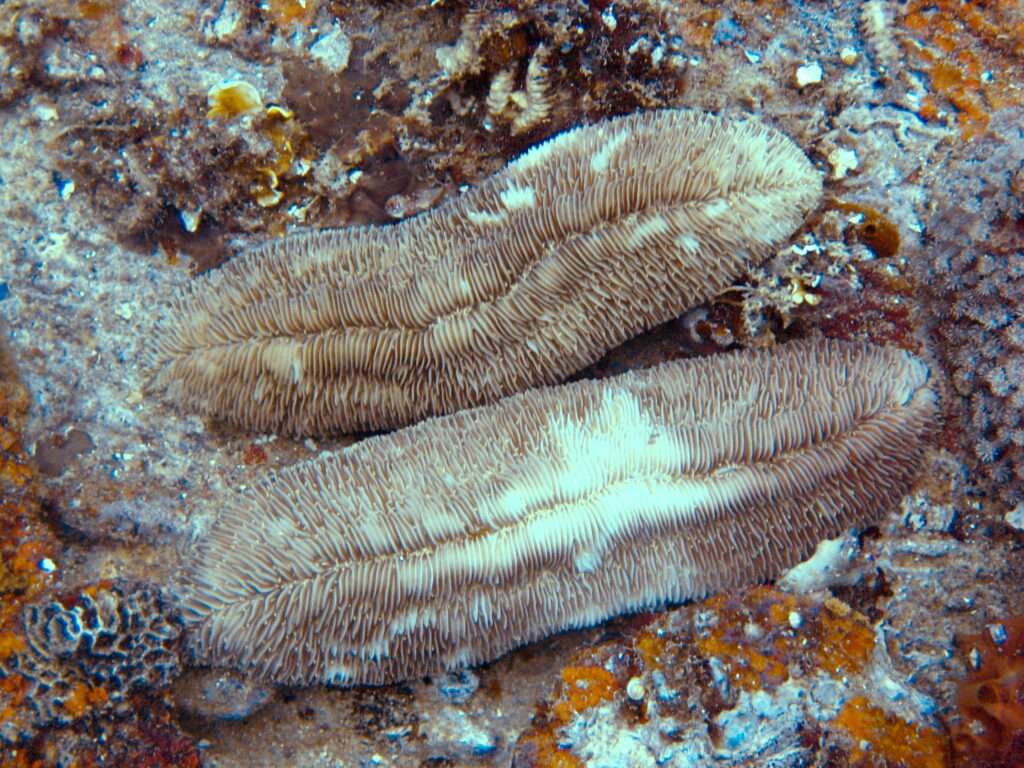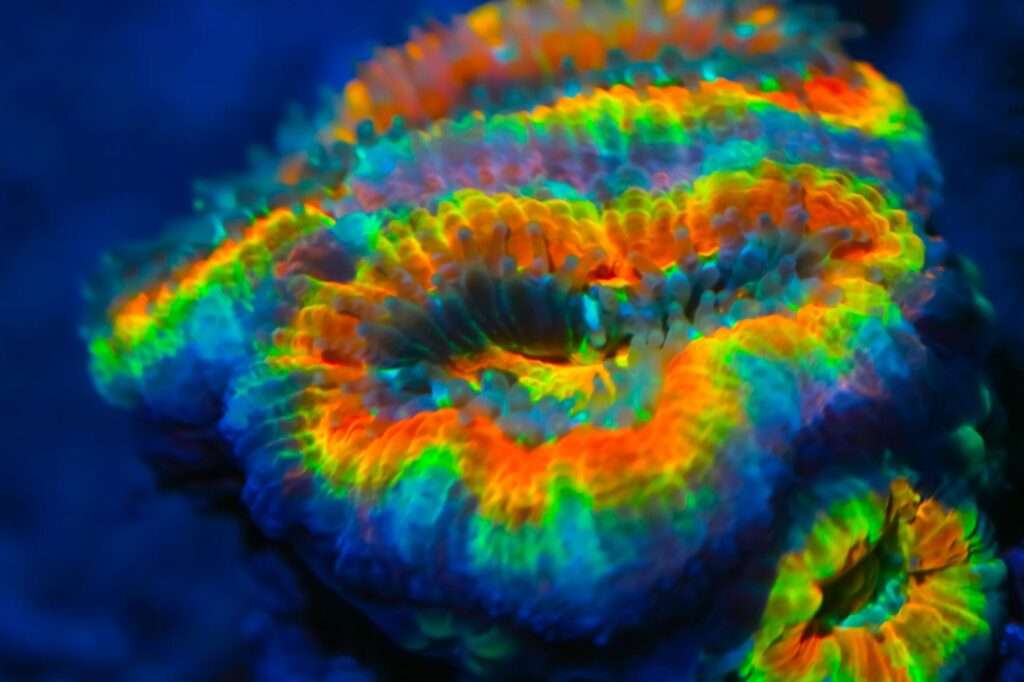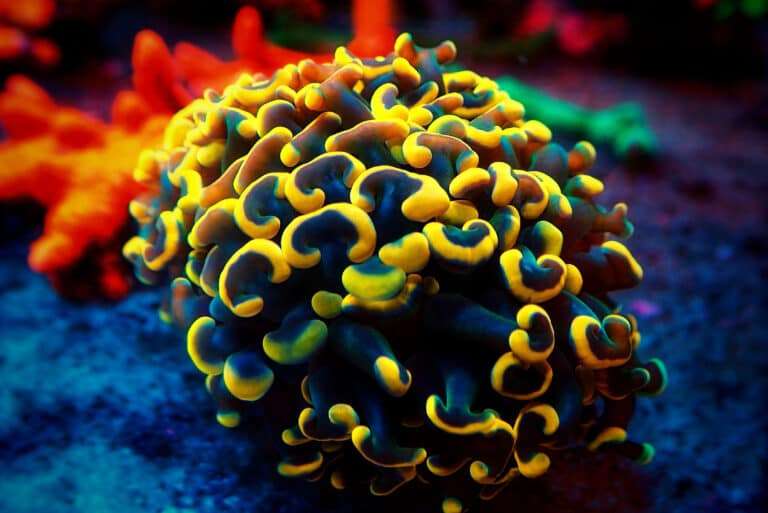
Coral Slipper True to its name, Polyphillia talpina has an extended form and shaggy, mop-like tentacles. Due to their interesting appearance, all of the corals in the Polyphyllia genus have names that are similarly descriptive.
When seen from the side, polyphyllia corals can have a variety of morphologies but are flat or arched. The Slipper Coral (P. talpina) has an extended or tongue-like shape. On their surface, they have numerous mouths, or polystomatous mouths, with the larger ones occasionally aligning with the centre axis or furrow. The tentacles are typically two millimetres (.75 inches) long and horn-shaped. The polyps extend during the day, and when they are fully extended, all that is left is a carpet of tentacles.
Habitat
The Polyphyllia genus is distributed throughout the Indo and Western Pacific, from the Marshall Islands to New Caledonia and Halmahera, then from Indonesia to Kiribati. It can also be found from Madagascar east to Fiji and Tonga. On the level ground between the lagoons and the reef, the Polyphyllia genus thrives. They can be found on debris, although they prefer muddy or sandy bases that are shielded from rapid water flow. Usually, they are found between 3 and 13 feet under the surface (1 – 4 m). In the wild, they are abundant and spreading.
Morphology
They have several tiny mouths, and their long, shaggy tentacles. Unless disturbed, they maintain their tentacles extended. They are green, grey, or cream in hue, with white tips on their tentacles. Although the Polyphyllia genus is largely a free-living and mobile species, it is thought to be colonial due to all the little mouths it has. There are two types of bone structure: flat and arched. Unlike the Herpolitha genus, often known as Tongue Coral, the Polyphyllia genus lacks the deep and noticeable central groove in the middle. They do, however, contain a tiny depression in the middle that is referred to as an axial furrow.
In Captivity

- Feeding
Polyphyllia corals have evolved a number of feeding techniques. Many of its nutrients are obtained through a symbiotic interaction with a sea algae called zooxanthellae. They can also take in dissolved organic substances and planktonic creatures as well as food particles from the water column. These corals require at least daily feedings when kept in captivity. Additionally, they require more frequent feedings in low-light situations. When fungiids create mucous nets, you can sprinkle little amounts of shredded meat on them. They can be fed brine shrimp, mysis, and shredded beef. Try to feed the coral the entire organism when using larger meals. For instance, to ensure that your Slipper Coral receives the maximum amount of nutrition from the meal, slice up the silverside but offer it to it whole.
- Social Interactions and Compatibility
They have the ability to inflict necrosis on unrelated coral species using their mucous net as a weapon. It is advisable to just have this coral’s relatives on the substrate because it can also move a little bit. Polyphyllia spp. and other corals that dwell on the substrate can become irritated by Polychaetes (Bristle Worms), even ones that are thought to be advantageous to a tank’s life cycle.
Table





